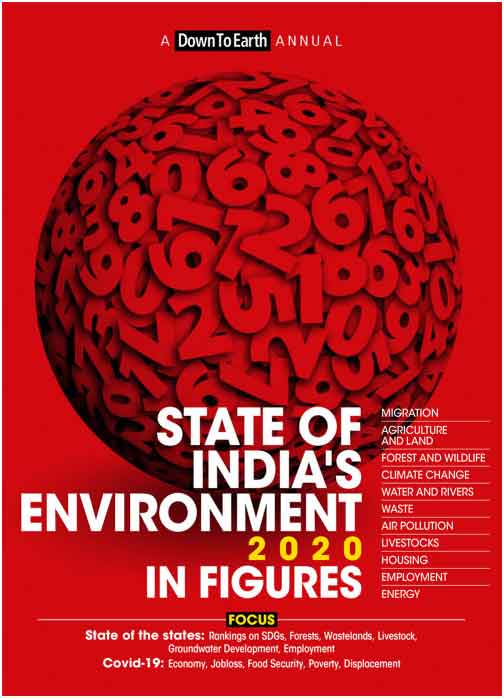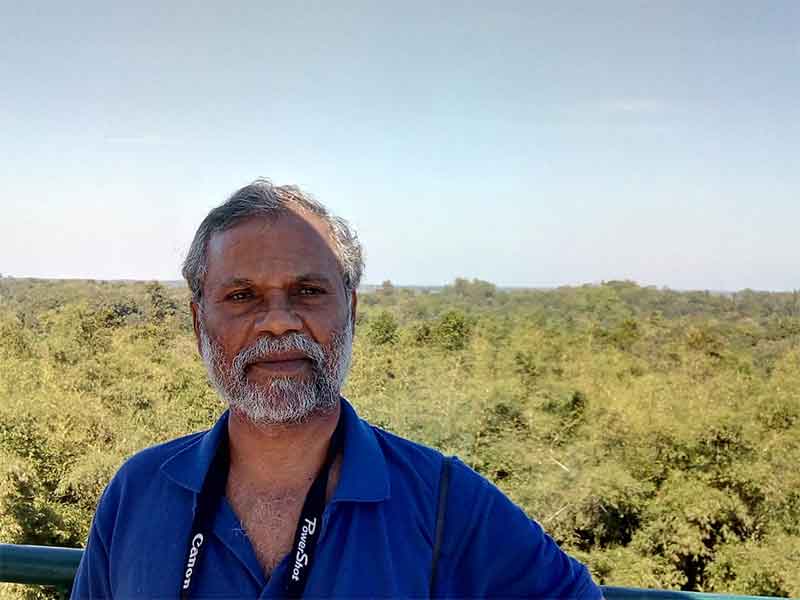A report said: “Siberia, the proverbial coldest place, […] is experiencing record warm temperatures, melting sea ice, and massive wildfires — changes to the environment that even the scientists most urgently tracking the climate crisis didn’t expect to see for another several decades.” (Bridget Read, “The Arctic is on fire, and we should all be terrified”, The Cut, July 6, 2020)
Bridget Read gives details: “The effects of that increase are myriad and terrifying. Melting snow creates dry vegetation for wildfires, which have reached record levels this summer, sending out giant plumes of smoke and releasing more greenhouse gases than ever before. Some of these are troublingly named ‘zombie fires,’ which don’t actually go out in winter, but burn under the snow and ice only to erupt in the air once again once the snow melts.”
Moreover, Bridget Read writes, people in Siberia are at risk of infrastructure collapse as towns there were built for the cold strain. The melting of Arctic ice contributes to sea level rise and irregular weather patterns around the world. The scariest is the melting of total permafrost, a layer of continuous ice that covers nearly a quarter of the land mass in the Northern Hemisphere, “in which approximately 1,460 billion to 1,600 billion metric tons of organic carbon are trapped. That’s more than twice the amount of carbon currently in the atmosphere.”
Bridget Read reminds: “If, with previously stable permafrost subject to never-before-seen heat, it is released, we could reach a tipping point beyond human intervention.”
The dangerous development is not limited only in the far region – Siberia. Similar dangerous developments, in other forms, are in almost all over today’s world. Assam, an Indian state, far south from Siberia, regularly experiences flood – an annual environmental calamity. Māti, (land) a short documentary by Wenceslaus Mendes and Anupam Chakravarty, tells about flood in Assam and its effects on Kaziranga, a national park and home to several ancient communities dependent on river in the area. The people there suffer first. (Wenceslaus Mendes and Anupam Chakravarty, “Flood in Assam: Watch the documentary Māti”, Countercurrents, July 5, 2020)
The film Māti” tells about irrational intervention in environment negatively affecting the people and other lives in the area. It’s a story of devouring of vast tracts of agricultural land and hills, altering of topography that hurts fauna, business inconsiderate to ecology, bureaucracy and lining of pockets, unemployment, and, consequently, traditional knowledge and life suffer.
To the west in the same country – India – grass and greenery are facing challenge from cement-concrete. Vidyadhar Date, a senior journalist and author of a book on environment and public transport writes: “Municipal authorities mercilessly chopping grass in parks in Mumbai and elsewhere are doing a distinct disservice to the city, to Nature and to people […]” (“We need grass, greenery, not cement concrete in our parks”, Countercurrents, June 27, 2020)
Vidyadhar Date narrates own experience: “I see sadists mercilessly mow grass in some of our public parks reducing them into deserts. [….] It is also shocking to find that some of our parks are being dangerously concretized partly because the cement and construction lobby is so strong.” Vidyadhar Date questions: “Can anything be more outrageous than the proposal to convert the wonderful wetlands in Navi Mumbai into a golf course? The wetlands are a wonderful site for migratory birds. Do the authorities even know the basic fact that golf courses are extremely unfriendly to the environment?”
Similar stories in scores are strewn around in the country, and in other countries. The India-story is well documented in the Center for Science and Environment’s (CSE) State of India’s Environment in Figures (SIEF/SOE2020).

Reports of world-renowned CSE, founded by environment-crusader Anil Agarwal, and now led by Sunita Narayan, are always praiseworthy as these present information gathered from grassroots level and checked/reviewed by experts. The reports help grasp the state of the country’s environment. These are very helpful for policy planners, researchers, students, and environment and political activists. Even, communities, peasant and labor organizations and unions can draw its help if these centers of life and livelihood like to make their members aware of the environment and ecology around them, and take active role in preserving ecology at respective levels. And, there shouldn’t be any doubt today that activity for ecology and environment, whether one likes it or not, may turn into political activity that can move from mobilization of people to participation in democratic struggle. The reports the CSE produces help with data, information, experience, and analysis.
The areas covered by the SIEF/SOE2020, fifth “In Figures” series, are the following:
“Global Economic Risks”, “Sustainable Development Goals”, “SDG Preparedness of states”, “Environmental Crimes”, “Good Governance Rankings”, and state of states of India, pandemic, migration, agriculture, land, economy, water, forests, air, climate, energy, biodiversity and wildlife, habitat, waste including municipal waste, eco-tourism. In the cases of environment, ecology and life, areas overlap. As for example, agriculture is connected to land, water, biodiversity, energy, climate, economy, etc., economy is connected to habitat, other than agriculture, etc.; and economy covers industry, import, export, trade, tariff, technology and science; and all these are connected to politics and political power, where the question of class power and class equation is present.
All these areas impact the commoners, the poor, the working class, the poor peasants, the labor. Middle class, professionals, students also are affected by the issues. This means, the people are affected by changes, positively or negatively, in environment and ecology. So, the report is a good source book for assessing condition of life of the commoners in India; and assessment of condition of life of the commoners helps raise political questions including the question of democracy. The report, thus, is of utility to people than slogan mongering and “business” without meaningful activity.
A closer look into the report shows its lively connection to public life. The SIEF/SOE2020 talks in the following way:
- Extreme weather events have remained the top economic risk in the past four years.
- India faces major challenges in nine of the 17 SDGs.
- Bihar and Jharkhand are least prepared to meet the SDGs by 2030.
- Courts need to dispose of 132 cases a day to clear the backlog of over 48,000 cases in a year.
- 15 state governments score below national average on the rankings.
- India is relaxing lockdown despite rising daily cases.
- The great meltdown.
- Containment measures would reduce global GDP by 2 per cent per month.
- Job crash.
- Almost 1.6 billion informal economy workers are significantly impacted.
- Food insecurity.
- Covid-19 can double the global food insecure population by end of 2020.
- A poorer world.
- India to see the most new poor due to the outbreak.
- Migration for employment.
- While men account for bulk of main workers, women have a higher share in marginal workers.
- New migrants.
- There has been a 23 per cent increase in the population that has migrated for work in the decade before the 2001 and 2011 Census.
- Internal displacement.
- India saw over 5 million new displacements due to disasters in 2019.
- Shramik
- 5 million migrants have used the train to return home in May.
- Farmers’ suicides in 10 states/UTs [Union Territories] record an increase between 2017 and 2018.
- Over 67 per cent families dependent on marine fisheries are under poverty.
- Uttar Pradesh sees a 118 per cent increase in rural stray cattle population.
- While India’s wasteland has reduced by 1.5 per cent, it has increased in 11 states and UTs.
- One in every 5 working urban population is without a job.
- 35 million people have demanded work in May.
- Of the 21 river basins, five are absolute water scarce.
- Groundwater dependency has increased in 23 states and UTs between 2013 and 2017.
- More than 57 per cent of India’s groundwater is contaminated with nitrate, fluoride and arsenic.
- India recorded 118 per cent increase in water conflicts between 2000-09 and 2010-19.
- Forest cover has shrunk in 34 per cent districts.
- 13 states have recorded a decrease in bamboo bearing area.
- Just 53 of the 122 non-attainment cities conduct real-time air quality monitoring.
- India recorded its warmest ever monsoon season in 2019.
- 19 major extreme weather events claimed 1,357 lives in 2019.
- 69 per cent increase in the number of heat wave days between 2013 and 2019.
- 2018 had an extremely cold winter with the most casualty in the past seven years.
- India’s climate commitments are much more ambitious than China, US and most other countries.
- There have been four bailouts since 2001 and the last three happened in just eight years.
- Of the nearly 50,000 known plant species in India, 23 per cent are endemic to the region.
- 305 fish species are threatened in India.
- Tiger population has increased by 747 between 2014 and 2018, but their net area has shrunk by 179 km2.
- There has been a 97 per cent increase in nature-based tourists in India between 2008-09 and 2014-15.
- 80 per cent of rural households have no arrangements for garbage collection.
- Piped water coverage in rural households of four states and UTs recorded a dip between 2012 and 2018.
- 5 states account for nearly 50 per cent of the India’s municipal waste burden.
- 5 tonnes per day of biomedical waste goes untreated in the country.
- 5 states are responsible for 5.5 million tonnes per annum waste generation.
The CSE reminds its readers: “The incisive factsheets covered in the series over the years have made headlines, and some were even used for raising related questions in the Parliament. This has been the rationale behind this unique ‘In Figures’ Annual series: to let the data ask the right questions. The need for data/questions has become even more pertinent today.”
This fact – let the data ask – is applicable in all countries.
The report is a mirror of power-equation in public life as it shows who pollutes and who pays. Polluter is always the powerful while the public always make payment. To pollute, to deface environment, to demolish ecology, it requires power in many forms – money-power, muscle-power, political-power – and source of these powers is the same: money-power. Pilferage is also a way of destroying environment. This act – pilferage – is an action-pious to a section of society; and the action also requires power.
The CSE-report is also a tale of power indifferent to public interest, and to posterity. This type of reports helps create awareness among public, helps create struggle for accountability and transparency. For many societies, this type of report is essential if the societies like to move along the path of its citizens’ survival and of democracy, because such reports make available required facts, and without facts, many fiery utterances, now in vogue in places, turn vague, useless.
Farooque Chowdhury writes from Dhaka, Bangladesh.
SIGN UP FOR COUNTERCURRENTS DAILY NEWSLETTER
















































